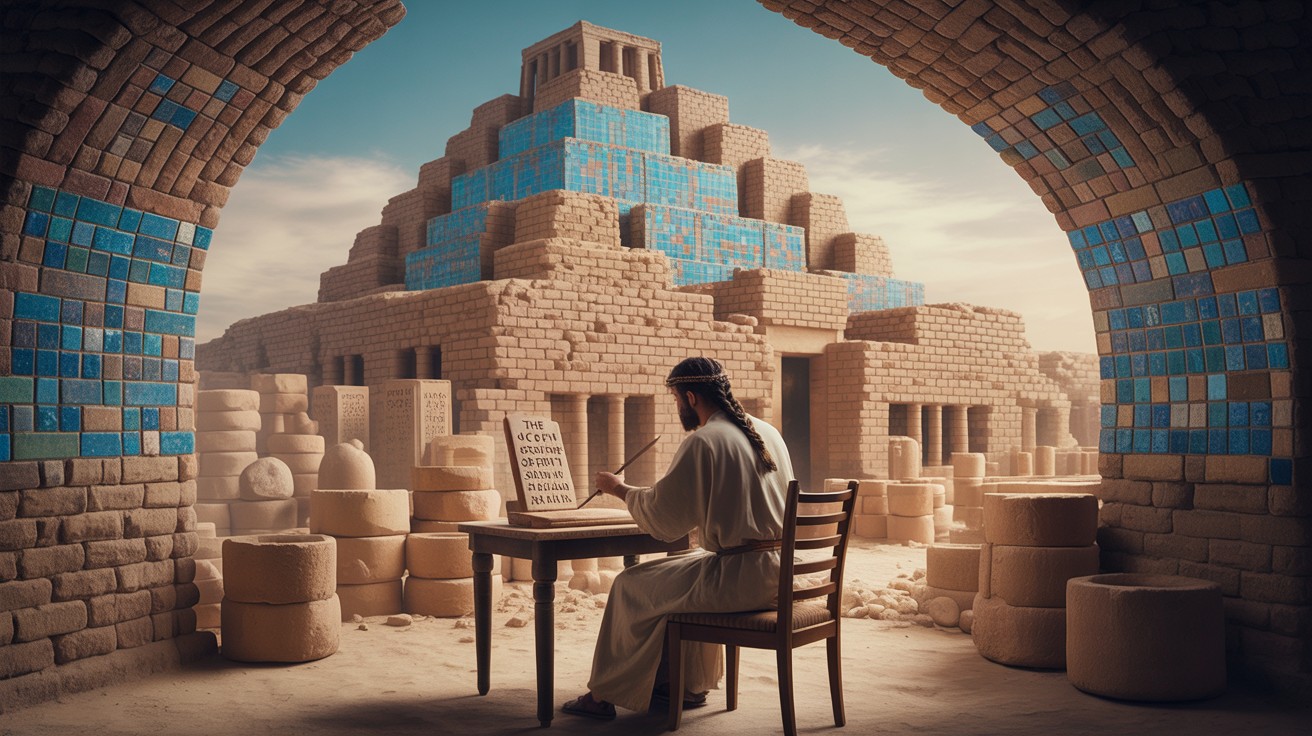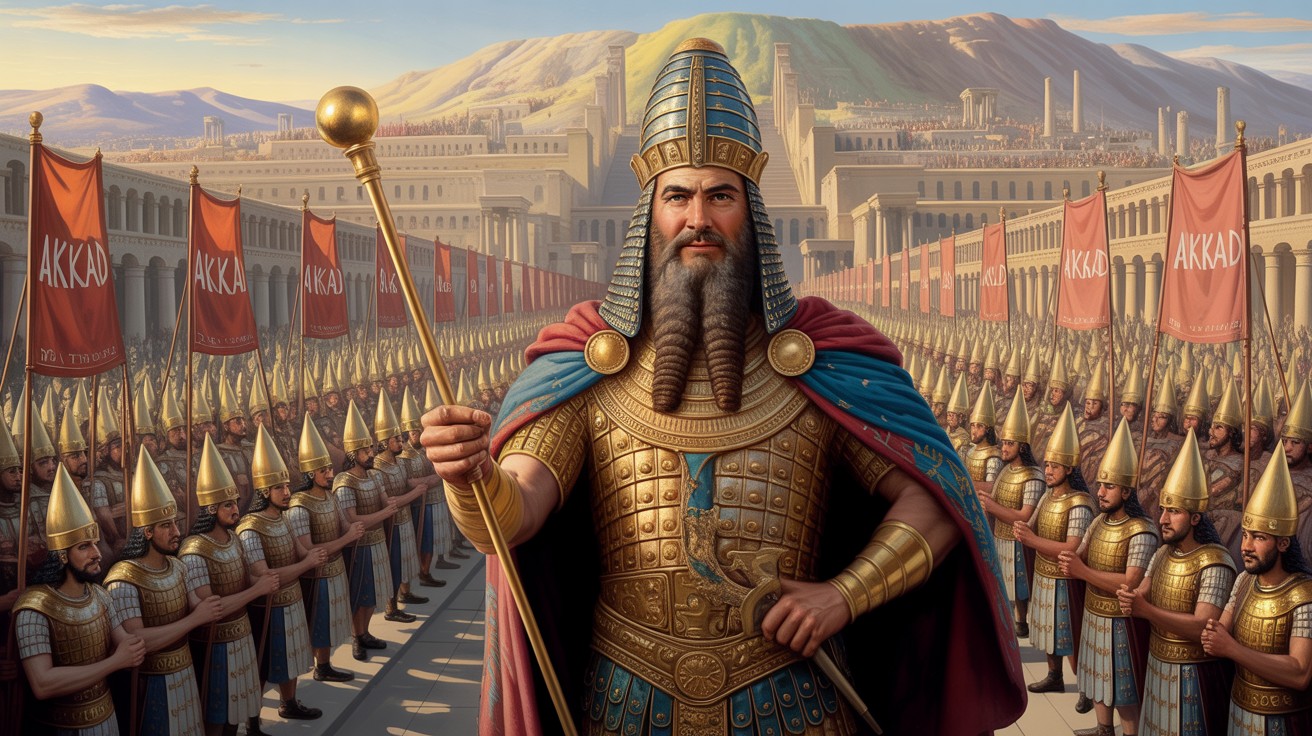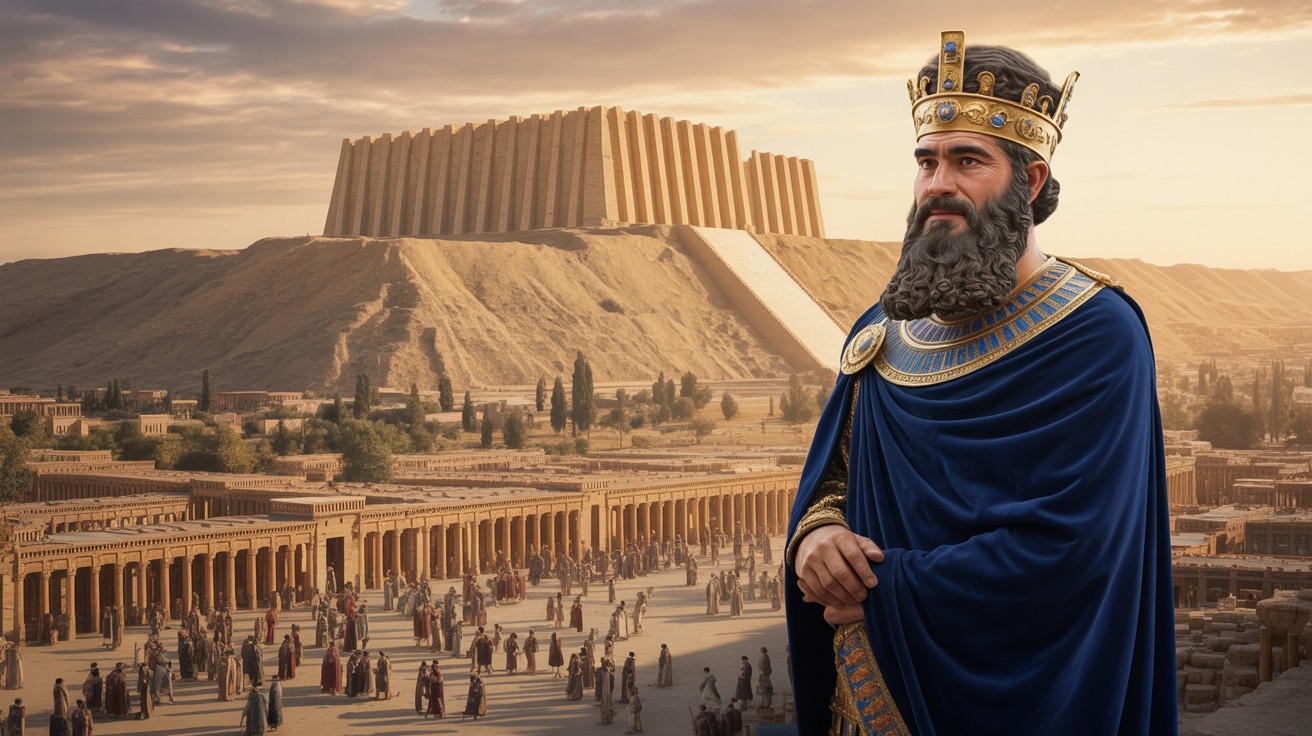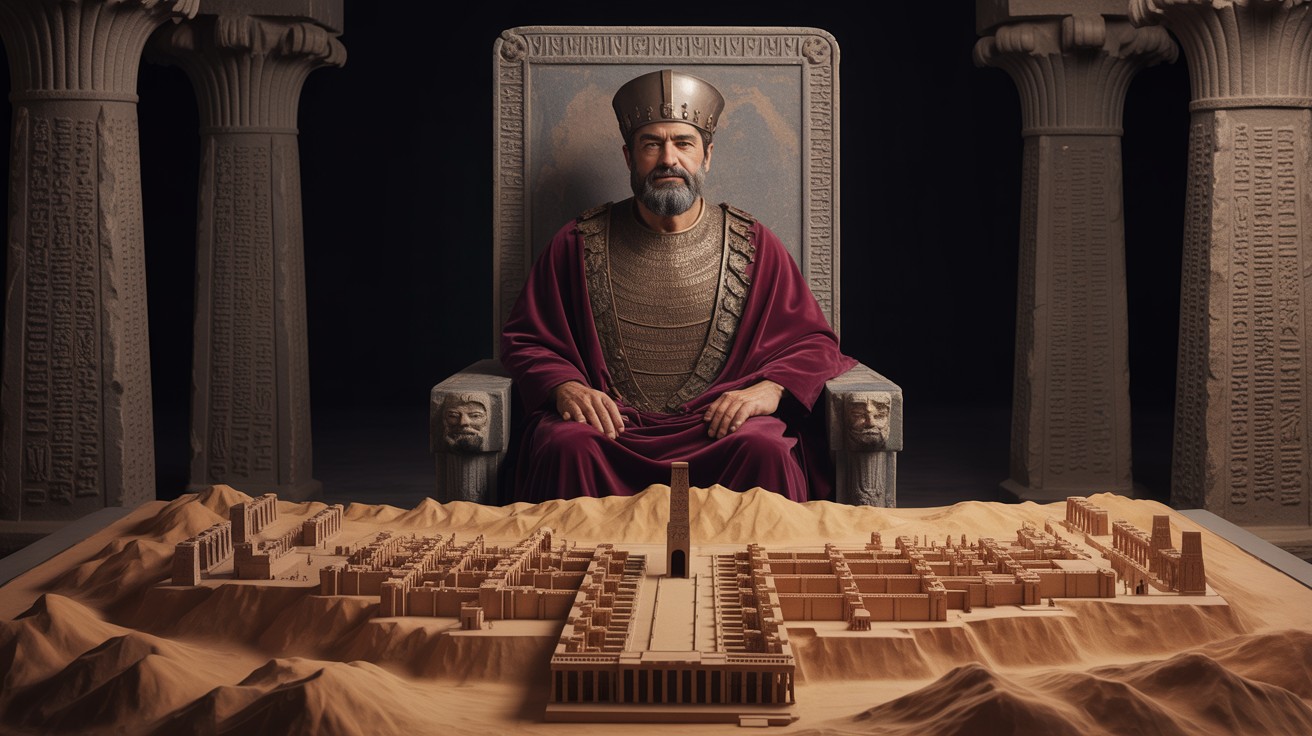Mesopotamian Civilizations
Discover the cradle of civilization through the lens of ancient Mesopotamia. From the innovative Sumerians to the mighty Assyrians, explore the rich heritage of humanity's first great civilizations.
Where History Began 🌍
Enter the mosaic of Mesopotamian heritage — ziggurats rising under starlit skies, cuneiform tablets glowing with ancient script, riverbanks of the Tigris and Euphrates alive with trade, and mythic figures like winged guardians blending into the flow of history, culminating in a modern cityscape born from these roots. The visuals are rendered in rich clay reds, river blues, and luminous golds, evoking both earth and divinity.
The cradle of civilisation began here, where writing first emerged and law was etched into stone. From Hammurabi’s code of justice to the earliest astronomical charts, Mesopotamia shaped the very foundations of governance, science, and order. Its legacy speaks of humanity’s first attempts to structure society and seek wisdom in the stars.
Faith was deeply interwoven with daily life, as temples crowned with ziggurats became bridges between earth and sky. The pantheon of gods — from Anu the celestial father to Ishtar the radiant goddess of love and war — reflected both the prosperity and the turmoil of human existence. Rituals, offerings, and sacred hymns echoed across the plains, binding people to divine forces larger than themselves.
Myth and epic flourished in this fertile land, with the Epic of Gilgamesh standing as one of the earliest recorded stories of mankind. Its themes of friendship, mortality, and the quest for eternal life mirror the universal struggles of humanity. Such stories transcended time, influencing literature far beyond Mesopotamia’s borders and continuing to inspire modern imagination.
Life in Mesopotamia was also a constant negotiation with the rivers. While the Tigris and Euphrates offered abundance through fertile soil, their floods brought destruction and demanded resilience. This duality shaped a culture of ingenuity — irrigation systems, canals, and agricultural innovations that supported bustling cities and extensive trade networks.
Artisans and scribes filled Mesopotamian streets, producing pottery, jewelry, and the earliest schools of record-keeping. Clay tablets preserved contracts, hymns, and even jokes, showing that beyond empires and battles, people cherished learning, creativity, and human connection. In these traces we see not only rulers and priests but also the daily life of ordinary citizens.
Today, Mesopotamian heritage is remembered as both fragile and eternal. Fragments of cuneiform, broken statues, and ancient city ruins stand beside modern skylines, reminding us that the first sparks of civilisation were struck here. The voices of Mesopotamia still whisper through time — in law, in myth, in architecture — inviting us to honor its beginnings while reimagining its legacy for the future.
If you could unlock one secret from the ancient world, what would it be?
Ancient Mesopotamian Civilizations
Explore the five great civilizations that shaped the ancient world and laid the foundations for modern society.
Sumerians
The first known urban culture, creators of cuneiform and city-states like Ur. The Sumerians established the world's first cities, developed writing, and created sophisticated irrigation systems that transformed the landscape of Mesopotamia.

Akkadians
Unifiers of Sumer under Sargon the Great, spreading Semitic culture and language. The Akkadians created the world's first empire, establishing centralized rule and spreading their influence across the known world.

Babylonians
Famous for Hammurabi's Code and the grandeur of Babylon. The Babylonians created one of the most advanced legal systems in history and built magnificent cities that became centers of learning and culture.

Assyrians
A fierce empire known for military might and advanced administration. The Assyrians created one of the most powerful military machines in ancient history and developed sophisticated administrative systems.

Chaldeans
Rebuilders of Babylon, remembered for Nebuchadnezzar and possible Hanging Gardens. The Chaldeans restored Babylon to its former glory and created one of the Seven Wonders of the Ancient World.

Periods of Mesopotamian History
A comprehensive journey through the evolution of Mesopotamian civilizations, from ancient foundations to imperial greatness.

2334-2154 BCE: Akkadian Empire
The Akkadians created the world's first empire under the leadership of Sargon the Great, unifying the Sumerian city-states and establishing centralized rule. They spread Semitic culture and language across Mesopotamia, creating a vast empire that stretched from the Persian Gulf to the Mediterranean Sea. The Akkadians were master administrators, developing efficient systems of governance and establishing trade networks that connected distant regions. Their empire marked a significant shift from city-state politics to imperial rule, influencing all subsequent empires in the region.



3500-2000 BCE: Sumerian Civilization
The Sumerians created the world's first urban civilization, establishing the foundations of modern society. They invented the first writing system (cuneiform), built the first cities like Ur and Uruk, and developed sophisticated irrigation systems that transformed the landscape. The Sumerians created the first legal codes, developed advanced mathematics including the base-60 number system, and built magnificent ziggurats that served as temples to their gods. Their innovations in agriculture, architecture, and governance influenced all subsequent civilizations.





1894-539 BCE: Babylonian Civilization
The Babylonians created one of the most advanced legal systems in history with Hammurabi's Code, establishing the principle of "an eye for an eye." They built the magnificent city of Babylon, one of the Seven Wonders of the Ancient World, and developed sophisticated mathematics and astronomy. The Babylonians were master astronomers, creating detailed star charts and predicting celestial events. Their contributions to mathematics, including the development of the base-60 number system, still influence our measurement of time and angles today.



911-609 BCE: Assyrian Empire
The Assyrians created one of the most powerful military empires in ancient history, known for their advanced warfare technology and administrative systems. They developed sophisticated siege warfare techniques, built massive palaces decorated with relief sculptures, and established an efficient postal system. The Assyrians were master administrators, creating detailed records and developing advanced military tactics. Their empire stretched from Egypt to Persia, and their influence on warfare, administration, and art lasted for centuries.




626-539 BCE: Chaldean Empire
The Chaldeans, also known as the Neo-Babylonians, rebuilt and restored Babylon to its former glory under the leadership of Nebuchadnezzar II. They created one of the most magnificent cities in the ancient world, featuring the legendary Hanging Gardens of Babylon, one of the Seven Wonders of the Ancient World. The Chaldeans were master astronomers and mathematicians, making significant advances in the study of celestial bodies and developing sophisticated calendar systems. Their empire represented the last great flowering of Mesopotamian civilization before the Persian conquest.




Mesopotamian History Timeline
The evolution of civilization in the Fertile Crescent
Mesopotamian Legacy
The foundations of modern civilization
Power of Mesopotamian Culture
Transform Ancient Wonders into Modern Masterpieces
Instant Video Creation
Transform Mesopotamian artifacts into stunning videos instantly! From ziggurats to cuneiform tablets, create cinematic masterpieces in seconds. Our AI brings ancient Mesopotamia to life with motion graphics, transitions, and atmospheric effects.
Digital Archives
Access the world's largest collection of Mesopotamian cultural assets! From high-resolution ziggurat carvings to detailed cuneiform tablet photography, build your personal archive of ancient wonders. Download, organize, and use thousands of authentic Mesopotamian images.
Cultural Remixes
Remix Mesopotamian art like never before! Combine cuneiform script with modern design, merge ziggurat architecture with contemporary styles, or create surreal mashups of ancient temples with futuristic elements. Your creativity is the only limit!
Ready to Create Mesopotamian Magic?
Join thousands of creators who are already transforming ancient Mesopotamia into modern masterpieces!
Explore Mesopotamian Visuals
Discover thousands of high-quality images from ancient Mesopotamia and transform them with AI effects.
Start Exploring